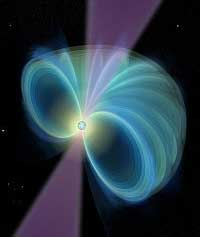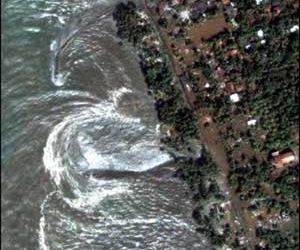 |
| A newly discovered pulsar type emits bursts of radio waves intermittently, unlike the continuously pulsing pulsars. (Image: Nature) |
Astronomers have unexpectedly encountered a strange type of star that emits bursts of radio waves intermittently. While they resemble pulsars in their radio emissions, these bursts occur randomly rather than at regular intervals like traditional pulsars.
“Discovering such a new type of object is quite unusual,” stated Andrew Lyne, an astronomer from the Jodrell Bank Observatory at the University of Manchester, UK. “It opens up a new field in astronomy,” he added.
The peculiar star was detected by the Parks radio telescope in New South Wales, Australia. To date, only 11 similar objects have been observed, referred to as Rotating Radio Transients (RRATs). These stars emit a burst of radio waves lasting from 2 to 30 seconds after random intervals ranging from 4 minutes to 3 hours.
The bursts give them an appearance similar to pulsars—rapidly rotating neutron stars that regularly release a beam of radio waves, akin to a lighthouse. Each time this beam sweeps past Earth, our radio telescopes detect a “click.”
However, no one has ever observed a pulsar-like object emitting bursts of radio waves in such an irregular pattern as RRATs.
The research team stumbled upon RRATs while searching for pulsars. “There are 11 regions in the sky where we all occasionally see flashes,” Lyne recalled. “It’s hard to believe these flashes come from the universe because they look very much like artificial interference.”
The team later realized that although the timing of the flashes varied widely, they were always multiples of smaller time intervals, ranging from 0.4 to 7 seconds, depending on the source.
Scientists concluded that RRATs may represent a previously unknown type of neutron star that rotates periodically (like a pulsar) but only occasionally emits a beam of radio waves. When asked about the cause of this randomness, Lyne admitted there is currently no evidence to explain it.
Vicky Kaspi, an astrophysicist at McGill University in Montreal, Canada, pointed out that some pulsars have previously been known to emit sporadic secondary pulses, although astronomers have struggled to explain this phenomenon.
“It’s possible that RRATs are doing the same thing,” Vicky Kaspi speculated, “but their periodic radio emissions may be too faint for us to detect.“
T. An





















































